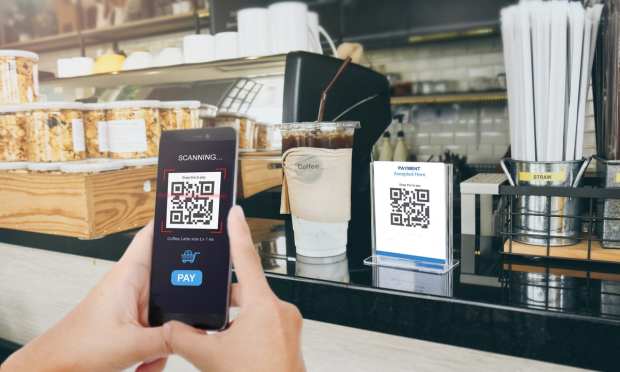Quick And Ready QR Codes Moving To The Front Of The Line In Touchless Payments

As we continue probing the digital-first trends taking hold online and off, PYMNTS recent Global Digital Shopping Index found that “top-performing merchants distinguish themselves by offering many digital features while also prioritizing customers’ convenience and security. At least 90 percent of leading merchants offer nearly all of [27 digital features examined].”
Rising to the top of that hot digital features list is the QR code, whose incarnation as a paragon of 21st century payments tech is something that “amazes” inventor Masahiro Hara.
For the January 2021 PYMNTS QR Code Payments Tracker® done in collaboration with Citcon, we examine the breadth and depth of QR code deployments happening in every corner of the payments world, as what’s old is new again, and that old tech is saving today’s transactions.
“The pandemic has made consumers broadly more familiar with QR codes. There are reports that restaurants have seen a 25 percent increase in QR code usage by consumers in the past six months and hotels have seen [a nearly] eightfold increase,” Wei Jiang, president and chief operating officer at Citcon, told PYMNTS. “This familiarity is making QR code use as a payment method in the U.S. … something that consumers feel comfortable with.”
This affords a “safety dynamic,” where both merchants and consumers would like to avoid high-touch surfaces, and it sets us up for an environment that is absolutely ripe for QR code growth.
Customers ‘Enthusiastic’ About QR
America has no national QR mandates in place as such, while some other governments are encouraging their use to stop the spread of disease. The U.S. “is allowing private businesses to implement this technology at their own paces. Americans’ growing demands for contactless payments and the rise in businesses looking for solutions to implement them could cement the U.S. as a leader in the QR space if current trends hold, however,” per the new Tracker.
Citcon’s Jiang told PYMNTS, “The key challenge now is making front-office staff aware of QR codes and their benefits. With health and safety so much at the forefront of people’s minds, this is a great time to reiterate that QR code payments reduce both customer and retailer virus exposure. The long-term benefits [include] starting to establish an online connection to your in-store customers, so this is a strategic play as well. That may not be seen by checkout staff as critical to them, however, so the health message can be extremely effective.”
Awareness is spreading, as the QR Code Payments Tracker® cites a recent survey finding that 84 percent of U.S. and U.K. consumers said they’ve scanned a QR code at least once — 32 percent in the prior week. “Customers appeared to be quite enthusiastic about using the codes, with 67 percent of respondents saying that QR codes make contactless transactions easier and 54 percent reporting that they have used them more often since the pandemic began.”
QR Code Integration, American Style
While the Tracker notes that the “U.S. lags behind the rest of the world when it comes to adoption of contactless payments,” a survey conducted in the first months of the pandemic found that 27 percent of small and medium-sized businesses (SMBs) experienced contactless payment growth early in the crisis.
Customers’ embrace of QR codes is so sincere that quite a few won’t transact without them.
A recent PYMNTS report found that 34 percent of customers who prefer to use QR codes to make payments “would not complete their purchases if the option were not offered at checkout.” U.S. Retailers are getting that message, yet still doing things American-style.
“The United States is unlikely to make QR code-based payments mandatory. That said, we could see business leaders taking a proactive approach to address this and future pandemics by requiring QR code payments [for the improvement of] customer and employee safety,” Wei Jiang told PYMNTS. “For this to happen, the first step is driving in-store familiarity. Some companies are already well at the forefront of this, with the likes of Starbucks now driving a large proportion of their payments through QR.”
